The Great Family of labyrinth fish / climbing fish presented at Aquaristik.org: In today's Guides it's about the group gourami. We don't want to talk about a specific species like blue gourami (Trichogaster trichopterus), spotted gourami, marbled gouramis, thick-lipped gourami, mosaic gourami, moonlight gourami, honey gouramis or the dwarf gouramis but try to create a general overview of where these fish come from, how gouramis are bred and what needs to be considered when keeping them.
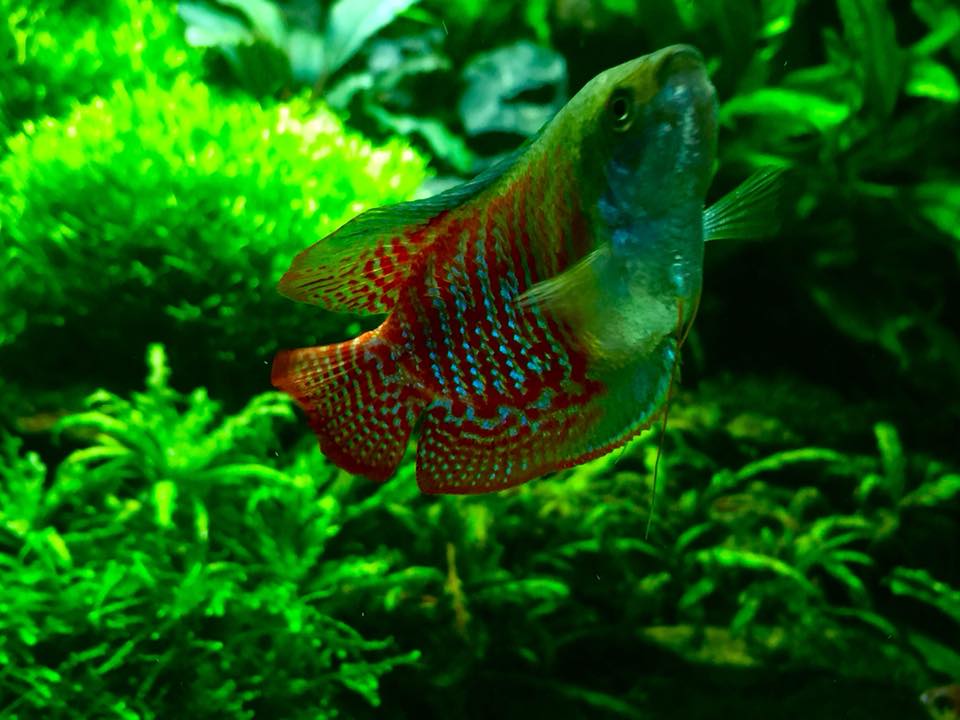
Where do gouramis and gourami come from?
Under the term Gourami hides a whole group of fish, which can all be assigned to the labyrinth fish. A distinction is made between two large groups. This distinction has to do with the origin of threadfish. On the one hand there is the group of Gouramis out of the area India and Burma. Here one speaks of the “Western threadfish”. In addition to the honey gourami already mentioned above, this also includes the striped gourami and also the dwarf gourami, which is particularly popular with aquarists.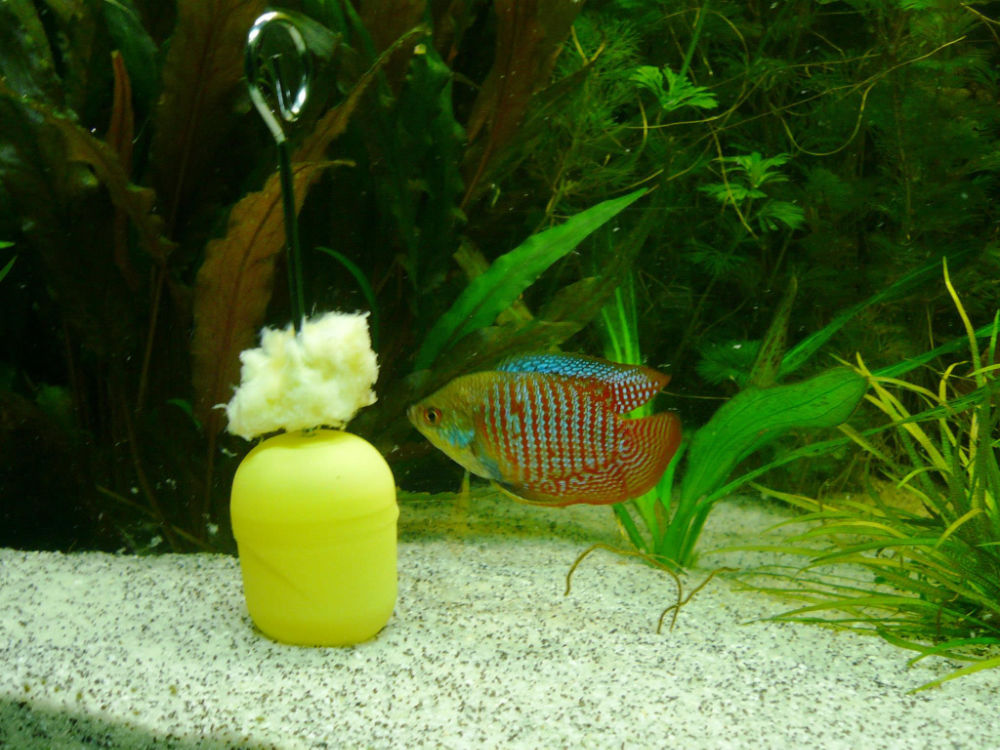
The second group is the “Eastern gourami group”. These species grow larger compared to the other group. The occurrence here is mostly in the range of Thailand to the Philippines to search. On too Sumatra you can find threadfish in the wild. In these areas threadfish are also used for nutrition and are eaten by us humans.
Gouramis mostly live in rivers and tributaries of rivers. Here, for example, count Ganga, Meghna or the Brahmaputra in addition. There they live in large groups.
In our latitudes there are threadfish from offspring and therefore also some cultivated forms. But you can also buy imports and wild-caught fish from us. However, these are rarely available.
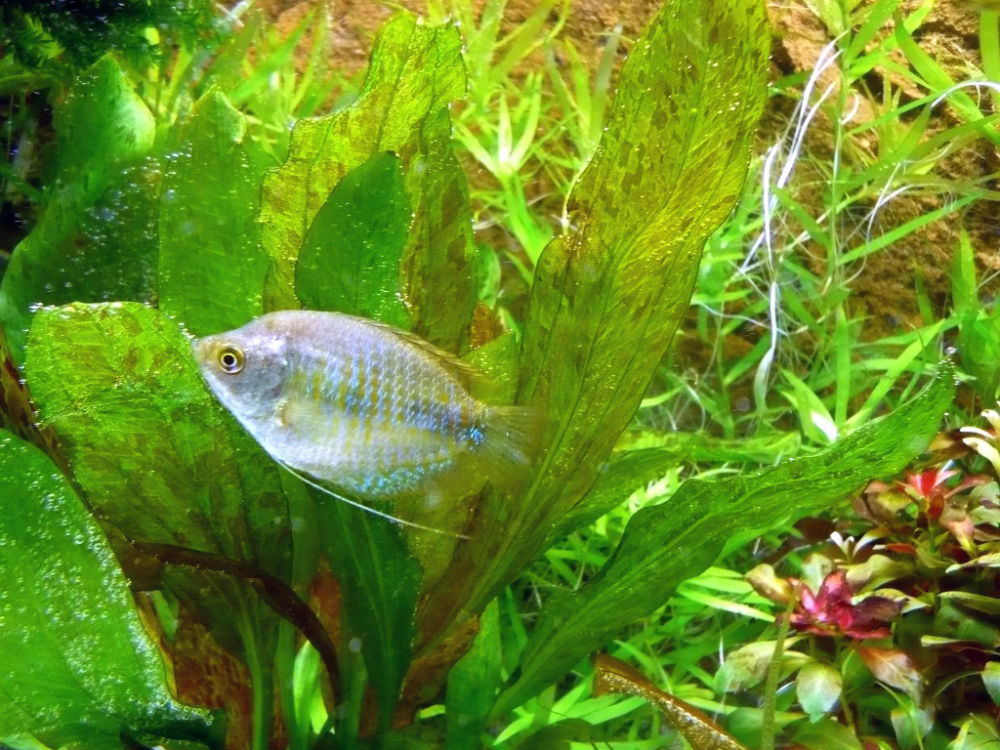
Water values and keeping conditions of threadfish and gouramis
Before we get to that behavior and appearance Coming to the gouramis, let's take a look at the requirements in stuff water values. It can already be said that these fish are also suitable for Beginner are suitable, since they can usually be kept quite well in tap water (blue gouramis). But there are requirements for some species size of the pool (How many fish fits in my aquarium) concerns. The blue gourami can quickly grow to more than 10 cm (up to 15 cm) and therefore should not be kept in tanks with less than 200 liters. Edge lengths of up to 120 cm are usually provided here. For a dwarf gourami, we recommend tanks from about 60cm, because it only grows to about 5-7cm.
In the relevant literature you can read that threadfish can be kept from 18 degrees, although we would advise against this. He feels most comfortable in a temperature range of around 23 - 28 degrees. It shouldn't be warmer either. When it comes to the hardness of the water, it depends somewhat on the species. Here, blue gourami can be quite uncomplicated and tolerate water of all degrees of hardness, whereas dwarf gourami need rather soft water below 10 hardness. This behaves adequately with the PH value. Again, there are gouramis that require more acidic water and others can be kept in ranges of 7-8 PH. The dwarf gourami should be kept below 7 PH.
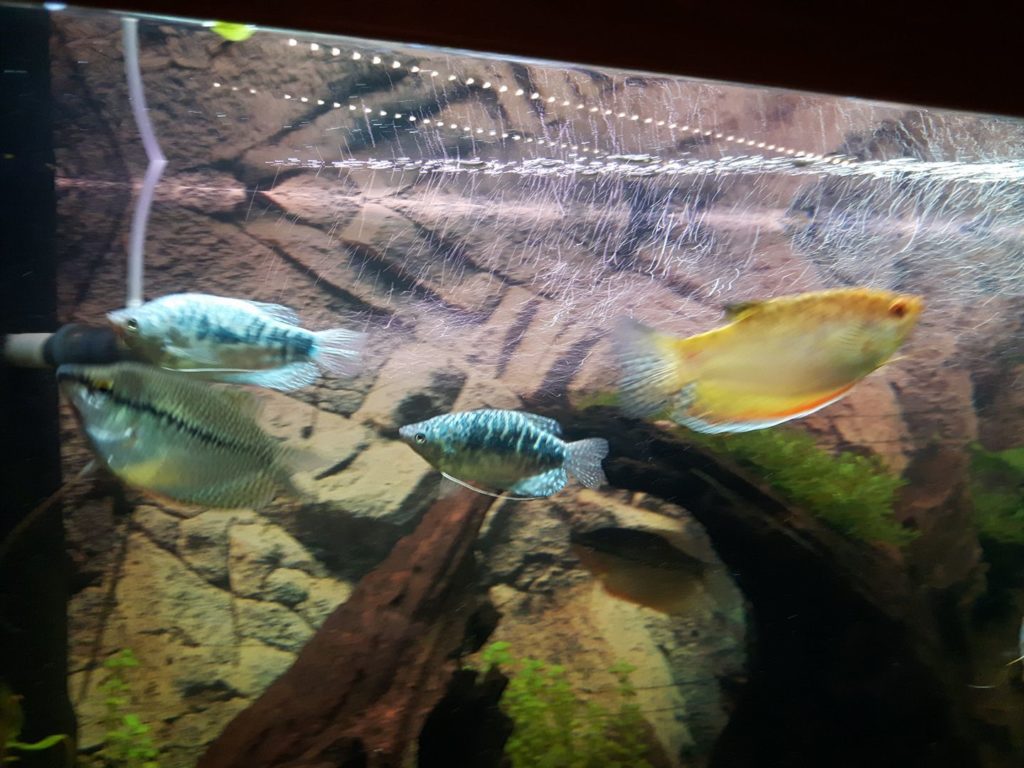
Appearance and peculiarities of gouramis
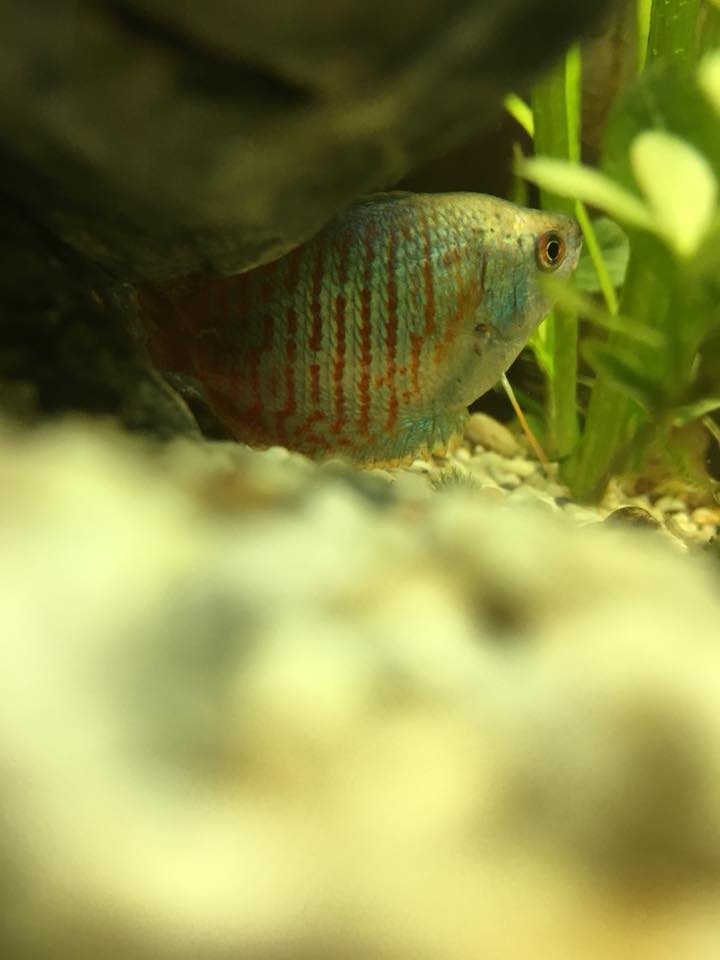 Before we get to the appearance of the gouramis, a word about socialization with other fish. This is usually not a problem, but can become problematic when breeding, because there the males in particular become quite aggressive. Otherwise, other species can also use the same Requirements in the brief to be socialized. However, one should be careful with scalars. Here we recommend not to socialize them together, since both species are very territorial are. Especially during the mating season, gouramis can hunt other fish to the death.
Before we get to the appearance of the gouramis, a word about socialization with other fish. This is usually not a problem, but can become problematic when breeding, because there the males in particular become quite aggressive. Otherwise, other species can also use the same Requirements in the brief to be socialized. However, one should be careful with scalars. Here we recommend not to socialize them together, since both species are very territorial are. Especially during the mating season, gouramis can hunt other fish to the death.
However, the gourami should always be used in pairs. Especially in small tanks you should not use more than one pair. In larger aquaria, one male and two females can be used, or possibly several pairs. But this depends extremely on the shelter options (Caves, roots,...) and targeting the posture. If you want to start breeding gouramis, then this is not recommended. But more on that in a later chapter.
Now we come to the identifying features. In the meantime there are a lot of species and cultivated forms and thus also a wide variety of colors. Be it orange gourami or dotted and marbled ones. Also striped species. Alone with the dwarf gourami you can fall back on many cultivated forms.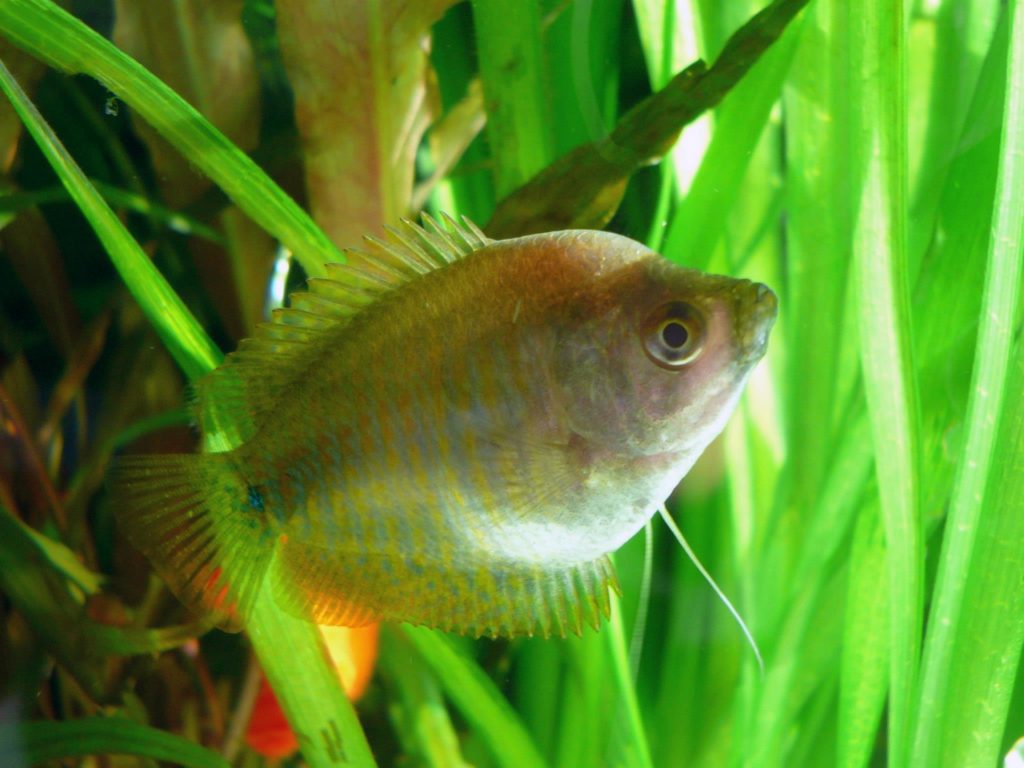
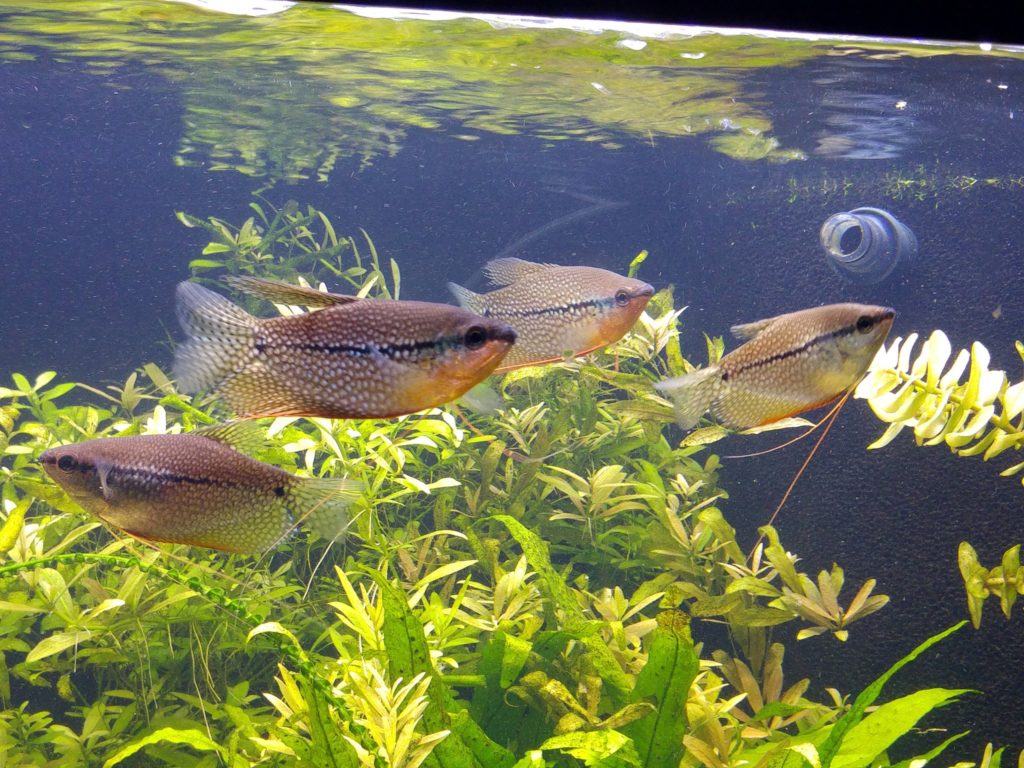 The Distinguishing between males and females is quite simple and can be recognized quickly in the adult stage. There are only a few differences in color as you might know from the guppies. Here the fins, more precisely the dorsal fin (dorsal) are the decisive distinguishing feature. Males have longer and more extended fins than the females. You can see that quite easily.
The Distinguishing between males and females is quite simple and can be recognized quickly in the adult stage. There are only a few differences in color as you might know from the guppies. Here the fins, more precisely the dorsal fin (dorsal) are the decisive distinguishing feature. Males have longer and more extended fins than the females. You can see that quite easily.
A special feature of the gourami is the special labyrinth organ. Therefore they also belong to the group of labyrinths. This organ sits under the gill covers and is heavily supplied with blood. It is for that Oxygen not only to be taken from the water, but also from ours Atmosphere. Anyone who observes threadfish often sees them gasping for air on the water surface. You can also take a closer look at the pictures here and this will become clear. A unique facility in these fish. This is needed for extra breathing and there are even species that would suffocate in good water without air breathing.
In captivity in our aquariums, the threadfish, which is often found in the group of climbing fish, can grow up to 10 years to become old. One can read in some reports that threadfish become very sluggish with age and only swim a little.
[the_ad id = “1019 ″]Gourami food
When it comes to food, gourami are real omnivores. You can basically do anything. Be it flake food of all kinds or live food and frozen food. See also our feeding guide. Mosquito larvae are also gladly taken. But you should make sure you eat a balanced diet. Especially if you want to breed animals.
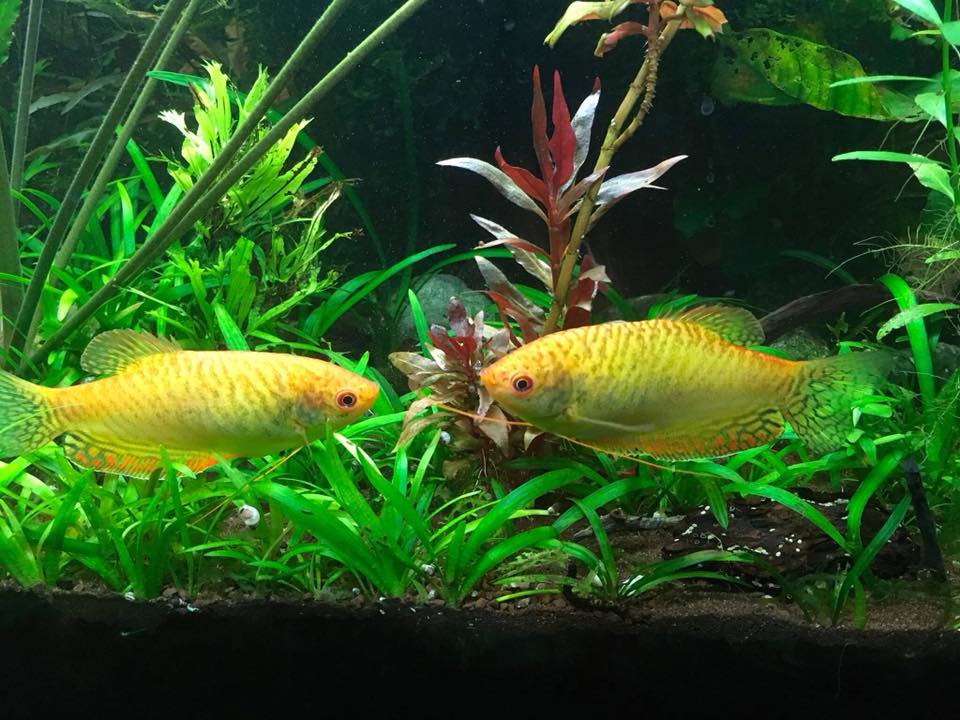
Mating and breeding of threadfish
Above all, breeding and mating fascinate many aquarists. Besides the big one selection and the colourfulness is also the sigh something that fascinates many aquarists about these fish. Be it the construction of the foam nest or the mating itself, in which the fish twine tightly together in order to connect the eggs and sperm. But let's start with first nest building
In the wild and also in the aquarium, the male is responsible here. In the great outdoors is mostly in the monsoon season and the foam nest built. The water level is extremely low here and there is almost no current. These conditions should also be created in the aquarium (low water level of only a few cm). In addition, a change in temperature can also prompt the male to start building the nest. We also got a video that shows it very clearly.
https://www.youtube.com/watch?v=c6p3sUlmu9w
The male builds with the help of his secretion in the mouth or mouth a nest of foam made up of many small bubbles. Usually there is also a lot of planting in the form of a closed one floating plants Carpet. The construction of the nest can take a long time. When the male is done, courtship behavior occurs. Even during construction, the male is extremely aggressive and there is no longer any trace of the peaceful form. other fish are literally hunted. Even the female is usually no longer allowed near the nest. Only when the male is ready does mating take place. We have also documented in a video what the courtship and mating look like.
https://www.youtube.com/watch?v=F_w4Tnyzbog
Thanks also to the Facebook group for the pictures and videos. Males and females of gourami twine tightly around each other and bend into a kind of circle.
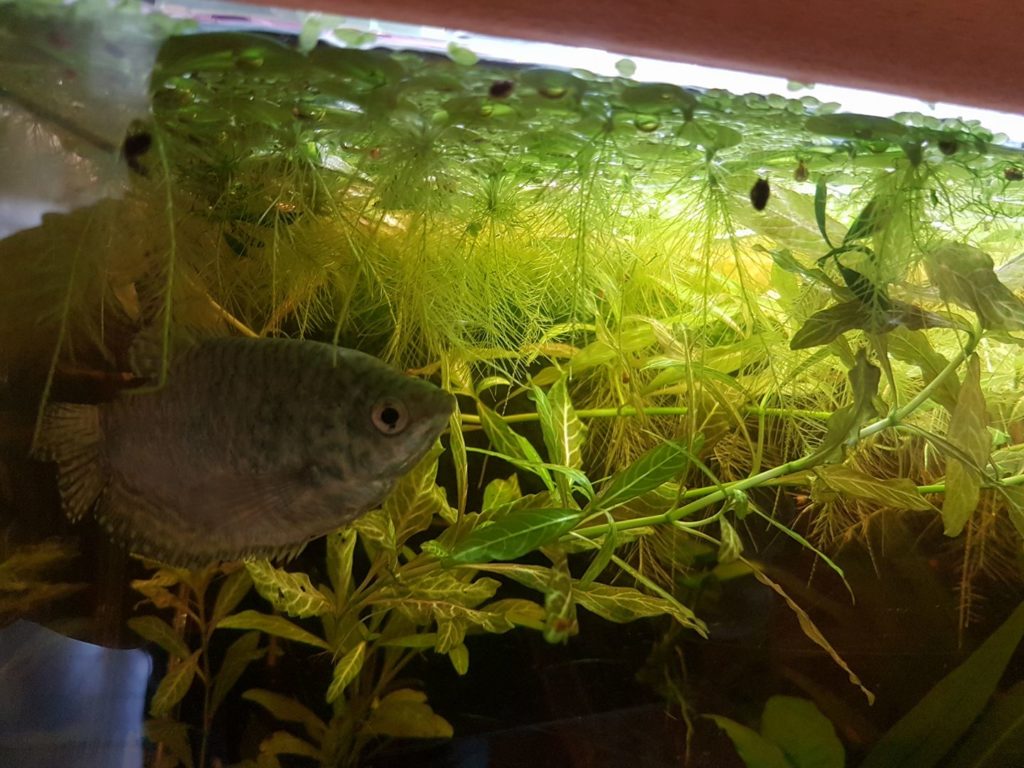 This is where the female lays her eggs and the male fertilizes them with his sperm. Depending on the species, up to 1000 eggs can be laid. In the case of the dwarf gouramis, this is around 500 pieces. These are then loaded into the foam nest by the male, with most doing this on their own. A special facility of nature is a small film of oil on the individual tiny eggs. This provides buoyancy so that the eggs rise to the top. There she hangs in the foam nest. But it doesn't take long, because after just a few days, often just 24 hours, the time has come and the young hatch. In the first few days they feed on their egg yolk, which is quickly used up. Then she will of Artemia and other microorganisms fed. So they grow quite quickly to a stately size.
This is where the female lays her eggs and the male fertilizes them with his sperm. Depending on the species, up to 1000 eggs can be laid. In the case of the dwarf gouramis, this is around 500 pieces. These are then loaded into the foam nest by the male, with most doing this on their own. A special facility of nature is a small film of oil on the individual tiny eggs. This provides buoyancy so that the eggs rise to the top. There she hangs in the foam nest. But it doesn't take long, because after just a few days, often just 24 hours, the time has come and the young hatch. In the first few days they feed on their egg yolk, which is quickly used up. Then she will of Artemia and other microorganisms fed. So they grow quite quickly to a stately size.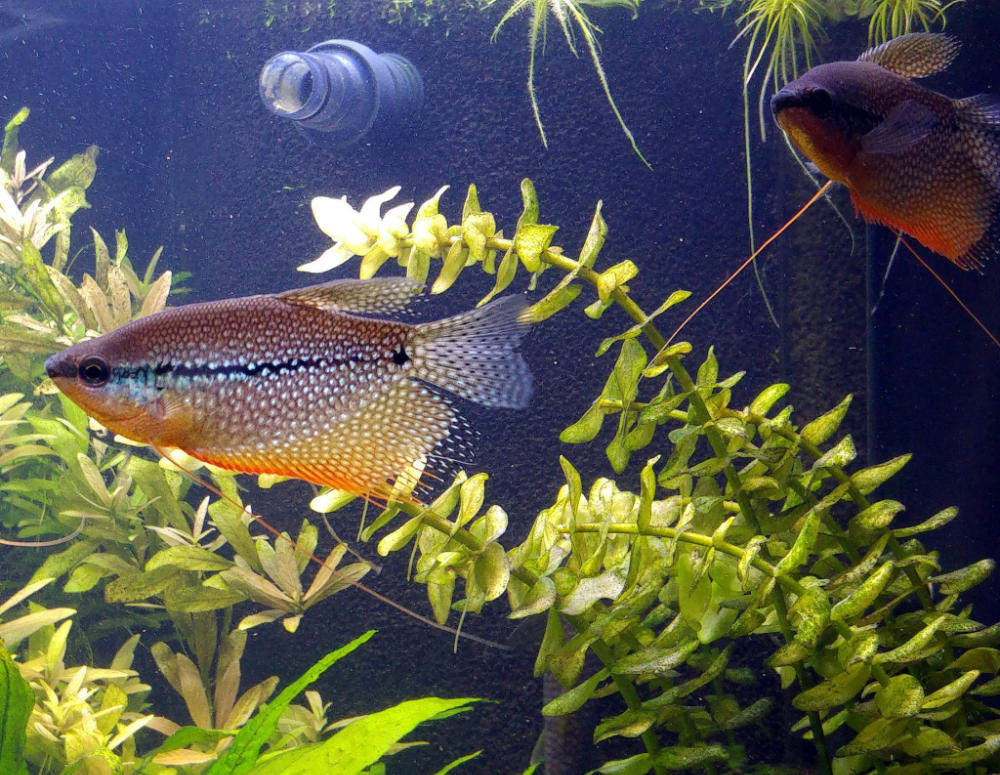
Let's come to a special behavior of the male, because after the spawning of the female, the male becomes extremely aggressive again and it is best to separate these two. Only the male takes care of the brood anyway. Therefore, the female can now be removed from the tank. The male should also be removed from the tank after a few days, otherwise young animals may fall victim to the male.
Of course not all of the 500 or 1000 eggs make it through. If you manage to get 10 percent through, it's very good. In the wild, even this is impossible. Usually only a few young gouramis will survive there.
Finally, we would also like to thank the many pictures and videos from the Facebook group: https://www.facebook.com/groups/Aquaristik/permalink/1708733145830653/



